How To Cut Down A Leaning Tree: A Complete Guide
Cutting down fir trees can be a daunting task, especially when the tree in question is leaning. Not only does it pose a potential danger to buildings and structures, but it also requires precise and careful planning to ensure a safe and successful removal.
Whether you are a homeowner looking to clear out a leaning tree in your backyard or a professional tree cutter facing a challenging job, the process of cutting down a leaning tree requires a specific set of skills and equipment.
Here, we will discuss the step-by-step process of cutting down a leaning tree, from assessing the tree’s condition to safely removing it from the ground. Additionally, we will provide tips and precautions to ensure a smooth and accident-free operation.
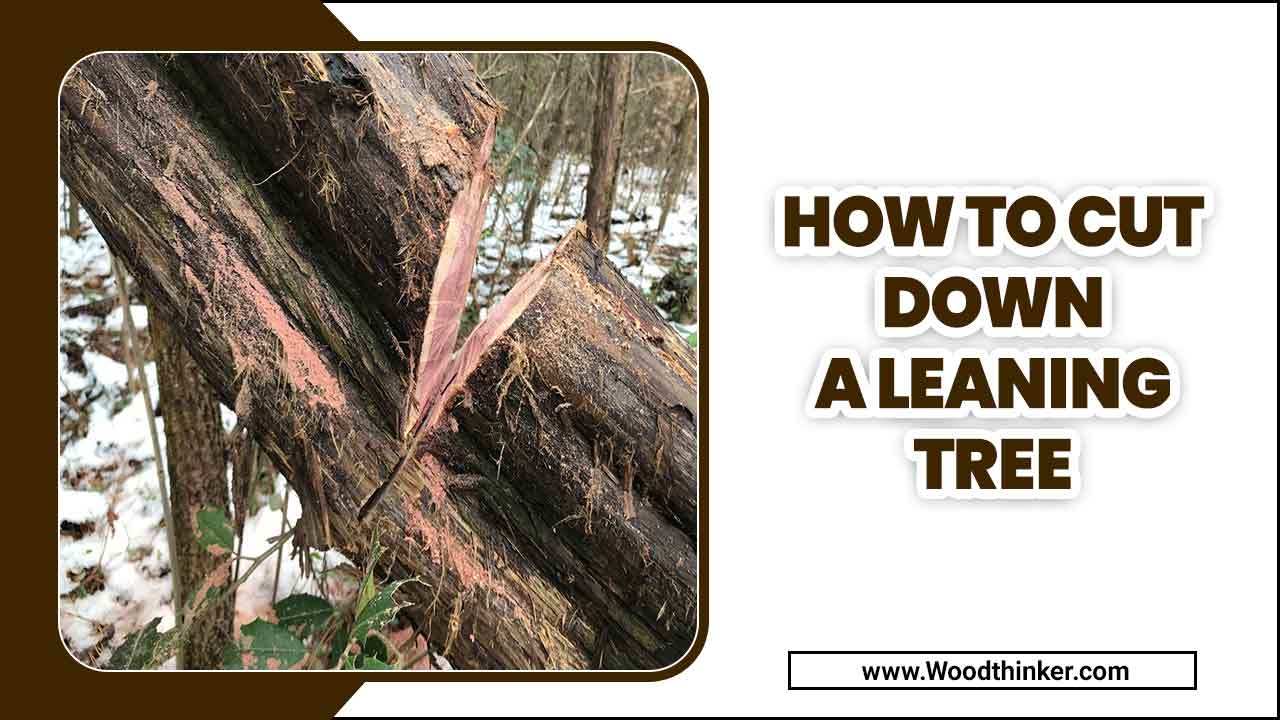
7 Easy Ways To Cut Down A Leaning Tree
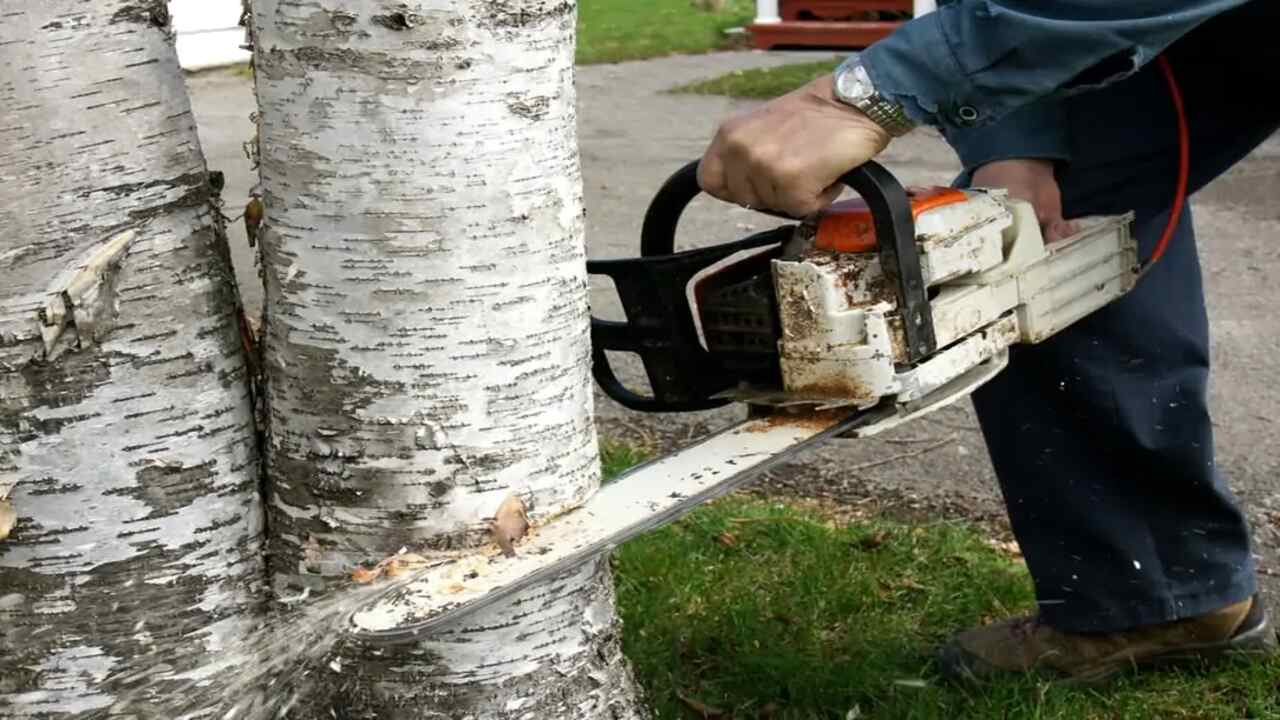
A leaning tree is a hazard to people and property, so you must take the necessary steps to prevent it from falling. If you find that a tree in your yard is leaning dangerously close to the ground, there are several things you can do to try and stabilize it.
If the tree is merely experiencing natural fluctuations in its height, you may be able to wait until those fluctuations subside before taking action. In either case, make sure that you consult a professional before taking any action, as their skills may be more effective than yours. Here are some easy ways to cut down leaning tree branches.
1.Get A Ladder
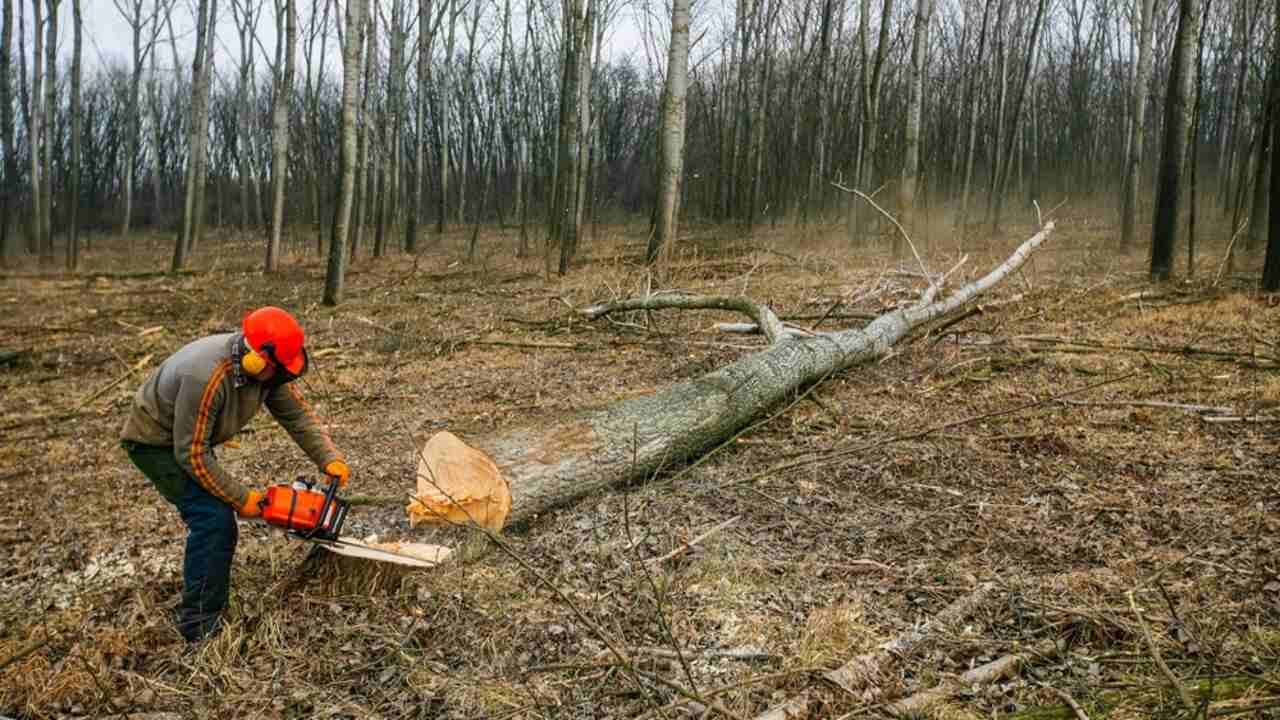
If you see a leaning tree, don’t try to push or pull it upright. Instead, get a ladder and use it to cut the tree down at a safe height. To safely cut the tree down, use the ladder to support the tree as you work. When cutting the tree down, use chainsaws or other equipment with safety features, such as safety guards and hand protection. Be careful not to damage the tree or the surrounding area when cutting down the tree. Additionally, if you can’t reach the tree, call a professional tree trimmer for help.
2.Cut The Stem At Ground Level
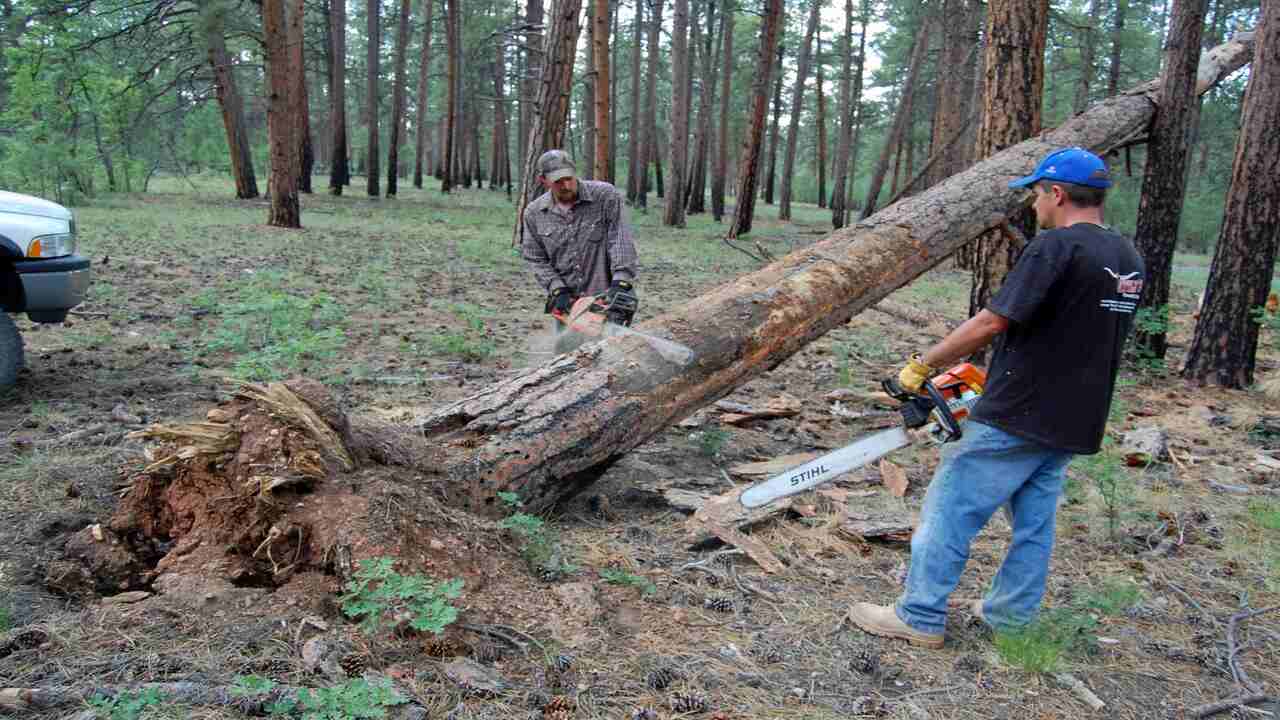
When cutting down a tree that is leaning, it’s important first to cut the stem at the ground level. This will help prevent the tree from falling and causing damage to property or people. After the stem is cut, use a saw or chainsaw to cut the tree in half at the root. You can also use a joiner or axe to chop down the tree. It’s best to do this carefully and safely so as not to harm the surrounding area. If you plan on doing any of these tasks, be safe and cautious when working around medium trees.
3.Beware Of Sharp Edges And Nails.
When cutting down a leaning tree, be watchful for sharp edges and nails that the leaves may conceal. Use a saw to make a clean cut and avoid injuring yourself or the tree. To ensure the tree doesn’t fall during the cutting process, use a sturdy ladder to keep it upright.
After the tree is down, remove any branches that are too close to the ground. Clean up any debris and prepare the area for your new tree. In summary, cutting down a leaning type of tree can require planning and careful execution to ensure the safety of the tree and those working on it.
4.Pry Off Branches With A Sawzall
To cut down a leaning tree, you must pry off the branches with a Sawzall. With each pass, the saw will remove more and more of the tree’s support until it eventually falls over. If you cannot cut the tree down with a chainsaw or an axe, there are other options.
You can use a Sawzall or hack saw to cut branches off the tree. Alternatively, you can use a pole saw to do the same job. If the tree is large, you may need to use a chainsaw. If the tree is small, you can use an axe or hatchet instead. Another way to cut down a leaning tree is by throwing a rock at it.
5.Cut The Tree In Two From Top To Bottom
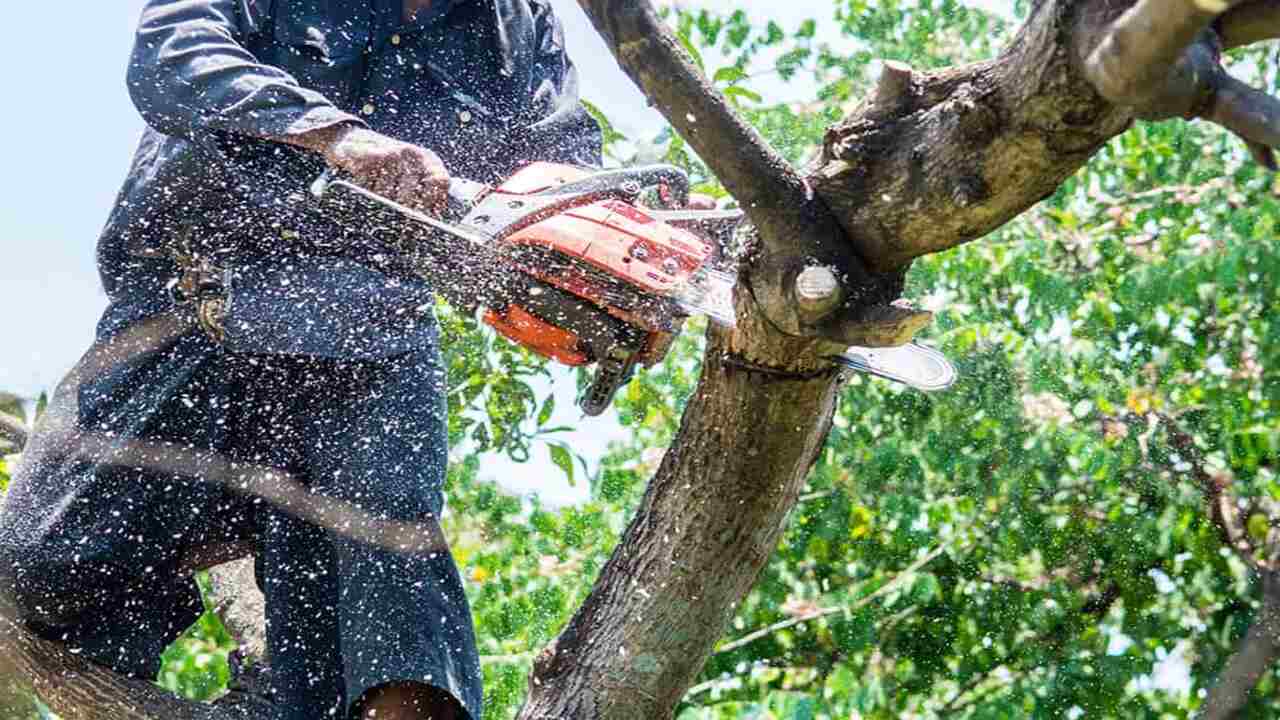
When cutting down a tree, it is vital to ensure that the tree’s root system is separated from the trunk. Cutting the tree in two from top to bottom will prevent the tree from falling over and causing damage. Instead of cutting the tree in half from top to bottom, it is also possible to cut it in half from side to side.
This method allows you to preserve as much of the tree as possible while still cutting it down. You can make cutting down a leaning tree easier by wearing protective gear, such as safety glasses and gloves, and keeping bystanders at a safe distance. Additionally, you must be careful not to injure yourself or others while carrying out this important work.
6.Use An Axe To Chop Through The Trunk And Limbs.
There are several ways to cut down a leaning tree situation, but the most effective method is to use an axe. Chopping through the trunk and limbs until the tree owner falls over can save a tree from significant damage and prevent it from falling on other buildings or people. Make sure not to injure yourself or bystanders when cutting down the tree. If the tree is too big or heavy to move with an axe, use a chainsaw to cut it down.
Suppose the tree is too far away from the safety of the ground. Use a ladder to reach the top of the tree and safely remove it. In addition to wearing safety gear such as eye protection, always avoid contact with the types of trees woody parts when cutting down a leaning tree.
7.Get Help From A Professional If Necessary.
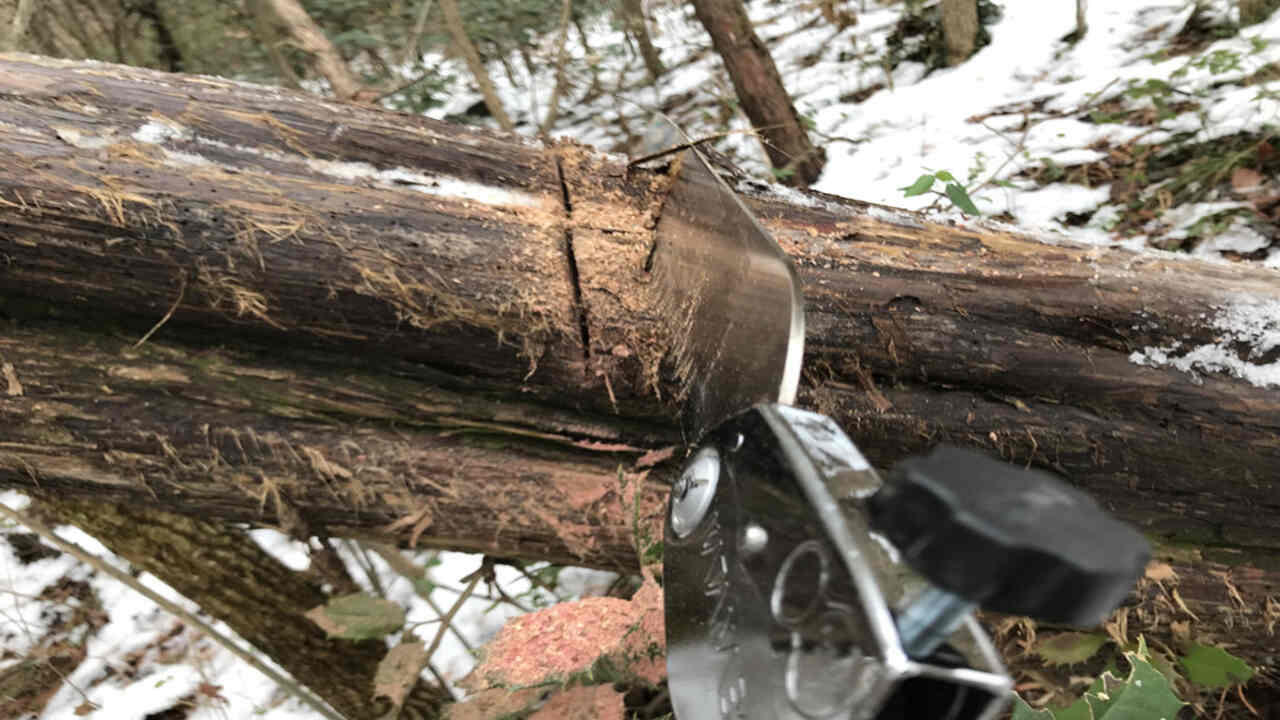
If you want to cut down a leaning tree, it is best to get help from a professional. If the tree is in your backyard, you can use simple techniques like cutting the tree for firewood back a couple of branches at a time. This will help the tree recover and lean back into its natural position. However, if the tree is on public or private property, it may be illegal to cut it down without permission.
When cutting down a leaning tree, take safety precautions such as wearing protective gear and using chainsaw safety accessories. Additionally, follow the safety guidelines of the professional helping you with the project. In some cases, the tree’s root system may be damaged and require special care to ensure the tree experts remain standing after being cut down.
Using Wedges To Control The Fall
It is crucial to approach the situation with utmost caution and expertise. A leaning unwanted tree poses a significant risk to both property and individuals, making it imperative to take immediate action. Before proceeding with any necessary measures, it is important to assess the tree’s condition and determine the cause of the lean. Factors such as root damage, soil erosion, or strong winds can contribute to the tree’s instability. Here are using Drive wedges to control the Fall:
- Wedges are used to control the fall of objects or materials.
- They are typically V-shaped tools made of metal or wood.
- Wooden wedges work by exerting force to separate objects or create gaps.
- They can be used to prevent objects from rolling or sliding down slopes.
- Wedge portions are commonly used in construction, landscaping, and woodworking.
- They are versatile and can be used in various applications.
Tips On Safety When Cutting Down A Tree With A Chainsaw
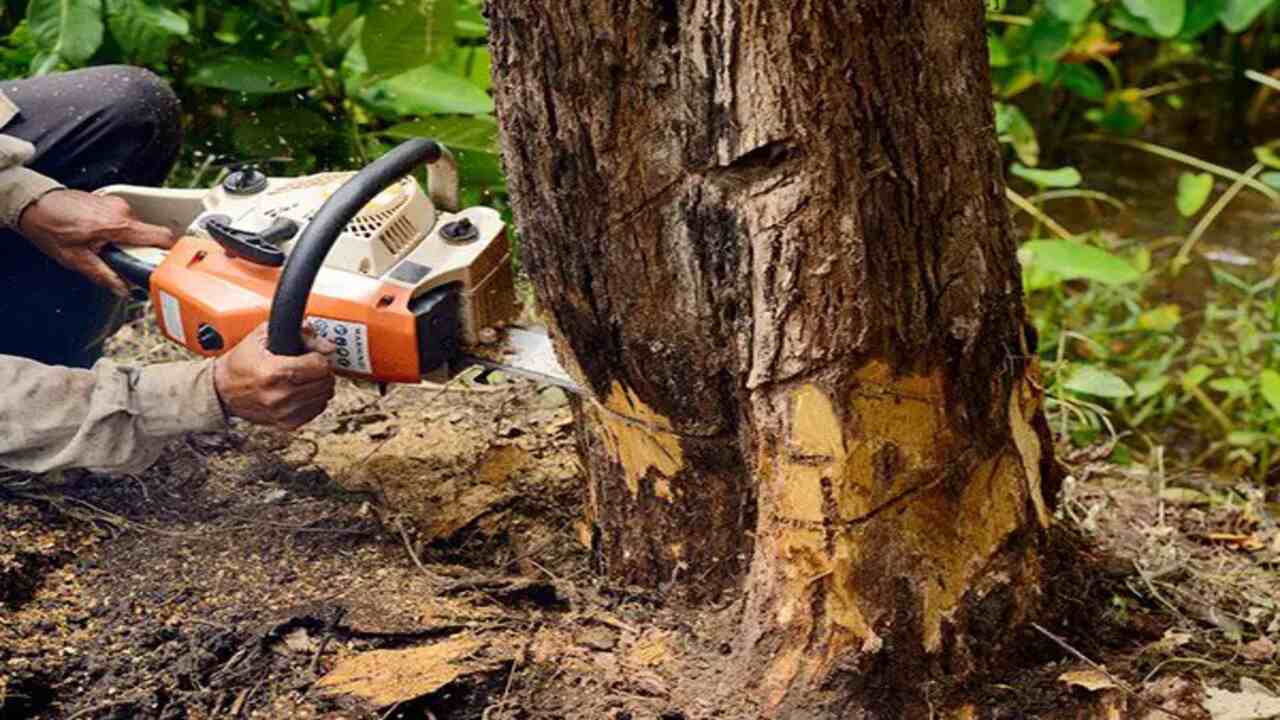
When cutting down a tree diameter with a chainsaw, it’s critical to follow safe practices and use the right equipment. Always wear protective gear, including safety eyewear, gloves, and a helmet, when cutting down a tree with a chainsaw.
Also, use a safety harness when operating the saw to ensure your safety and the safety of the tree. When cutting down a tree with a chainsaw, it’s important not to injure yourself or the tree. Here are some tips on how to safely do this:
- Always wear a safety helmet and eye protection when using a chainsaw.
- Keep your hands well clear of the blade at all times.
- Stay close to the tree, and keep your body parallel to the saw’s chain.
- Use short, smooth strokes and avoid making sudden or jerky movements.
- Avoid hitting any obstacles, such as branches or other crooked larger trees.
Conclusion
Cutting down a leaning tree requires proper preparation, equipment, and technique. It is not a task to be taken lightly, as it can be dangerous and potentially cause property damage. It is always best to consult with a professional tree service before attempting to remove a leaning tree on your own.
With proper direction, planning, and execution, you can successfully remove a leaning skill on trees and ensure your safety and that of those around you. With the right knowledge and precautions, a leaning Proper tree felling can be safely and effectively removed, preserving the safety of your property and those around you. Remember always to prioritize safety and seek professional assistance when needed.





![How To Make A Fairy House From A Tree Stump [Exclusive Idea] 53 How To Make A Fairy House From A Tree Stump [Exclusive Idea]](https://woodthinker.com/wp-content/uploads/2023/08/How-To-Make-A-Fairy-House-From-A-Tree-Stump-768x432.jpg)
